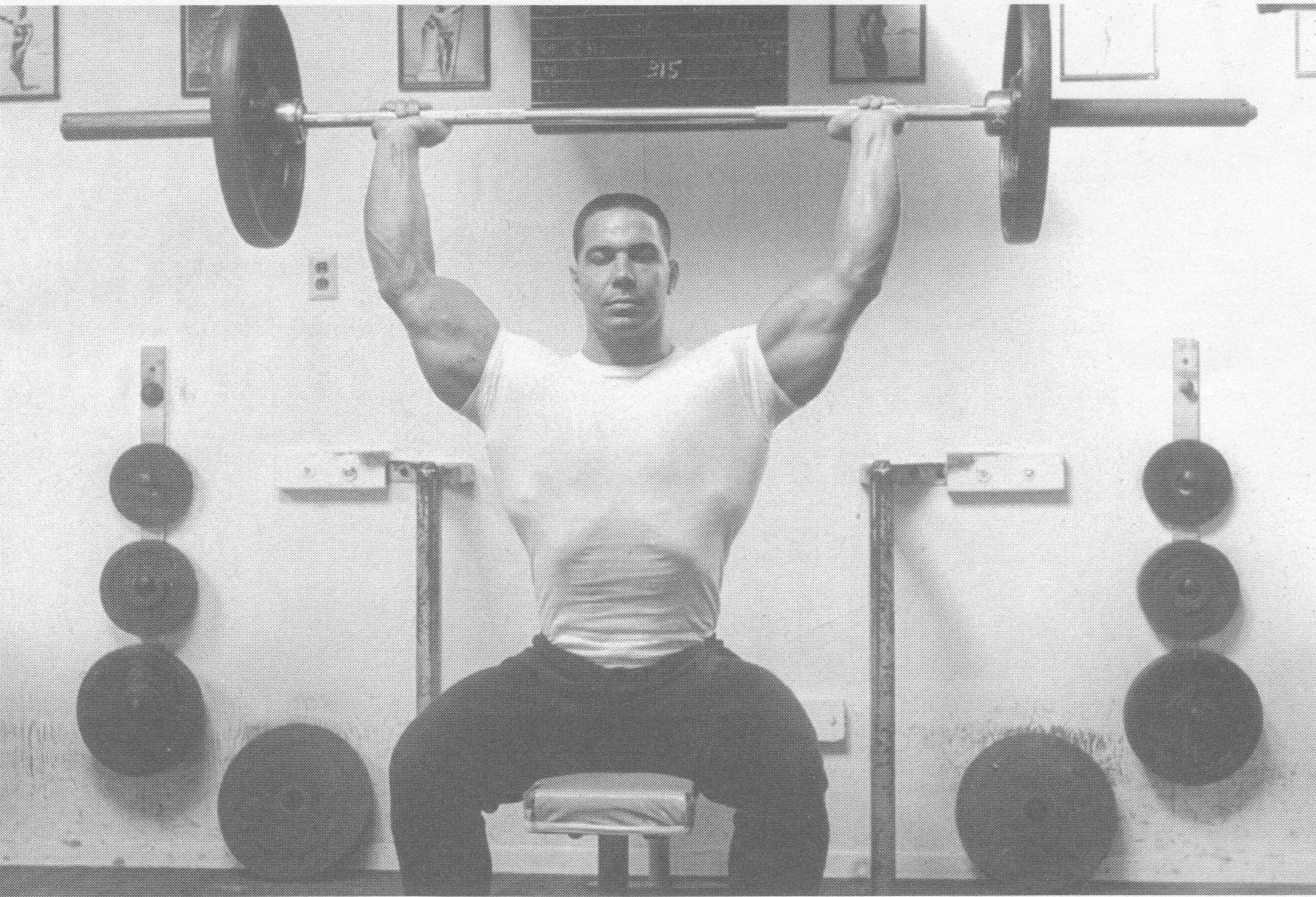The science behind our annual 'Big Steel Challenge'
Alan Couzens, M.S. (Sports Science)
Dec 2nd, 2015

Above: Legend of the 'big steel', Bill Pearl (an endurance athlete at heart...:-)
On building 'Hybrid Super Muscle' - "Bill related to me that once he got into the swing of his 2hr sessions, his heart rate would never drop below 120bpm and would often spike to 170..." - Marty Gallagher (The Purposeful Primitive)
#######
As the snow starts to fall here in Colorado and across most of the U.S., & more and more triathletes are forced indoors, that annual question starts to return – How do I keep training AND keep my sanity? :-)
While I’m certainly no expert in sanity, we do have a go-to plan of how to keep things fun and beneficial during the winter months here at Endurance Corner with a basic method that is about as simple and, at first appearance, unscientific, training methodology that you can get – we lift things up and put them down.
Yes, Winter time at EC means strength emphasis time. We have some fun with this by planning our annual Big Steel Challenge – where we encourage folks to see just how many pounds they can move over the course of a month.
Beyond, variety & fun, the importance of strength training for endurance athletes is a core component of EC’s philosophy and a component with a proven track record! Gordo transitioned into elite triathlon from the gym (via some heavy pack trekking/mountaineering). Justin had a pretty serious ‘gym junkie’ phase before hitting the endurance sports & during these challenges, they put up numbers that reflect this! Gordo moved over 500,000lbs of 'steel' over the course of a month in our 2012 challenge! And these 2 are not anomalies. A surprising number of very successful endurance athletes both within and outside of EC come from a strength background.
Why?
I’ve looked at this in a little more depth previously, but basically the most adaptable tissue in the human body is muscle! To a certain extent, more muscle = more adaptation. Or, looked at a little more quantitatively, in my experience, those athletes that I’ve worked with who have shown high levels of muscle mass relative to their frame (via DEXA scan or somatotyping) have also been ‘high responders’. And, this isn’t ‘Bro science’ :-) I’m not alone in observing this link…
In a neat study on the impact of body morphology on training response, Chaouachi et al. 2005 showed a 2x greater(!) increase in VO2max in response to 12 weeks of endurance training in the (muscular) Meso-Ecto (somatotype 1.8-3.3-3.2) vs the (skinny) Ectomorphic (somatotype 1.7-2.0-5.0) group. As shown below…

The mechanism behind this finding is obvious: More muscle = more ‘clay’ to potentially shape!
At least to a point…
In the same study, the mesomorphic group (2.3-4.8-2.2) actually had a slightly worse training response than the meso-ecto group (though still significantly better than the ecto group). This is because at a certain point, when a muscle or muscle fiber becomes too large, its capacity for aerobic trainability decreases – the ability to build O2 infrastructure into a large muscle (fiber) is decreased – diffusion distances become too great etc etc, i.e. in terms of a muscle being both strong and aerobically fit, there is a sweetspot.
And this sweetspot has just as much impact on the type of strength training an endurance athlete should emphasize as it does on the extent of strength emphasis in the endurance athlete's program. Structuring your strength block to ensure you’re building ‘muscle you can use’ as an endurance athlete is something I’ll look at in my next post.
However, the larger point of this post is that in the study referenced and in my own experience in working with athletes, there is a distinct link between training response and muscle mass and that, in somatotype terms, irrespective of the event, almost all good athletes fall within the ‘athletic’ sector, i.e. a dominance of mesomorphy.
Which brings us back to the importance of periodic strength blocks to the endurance athlete...
Serious endurance training is inherently catabolic. Energy demands are large and, in the absence of ‘build back up’ focus periods, athletes' muscles will tend to get smaller and weaker (more ectomorphic) over time (Kramer et al., 1995). This is especially true as athletes get older and the hormonal profiles change (Harman et al., 2013).
Therefore, if endurance athletes want to keep their training response high, if they want to keep responding to the endurance work and keep getting better season after season, periodic, deliberate ‘anabolic’ periods are necessary. Especially so, and in greater frequency (perhaps bi or even tri-annually), among older &/or skinnier athletes…
As a card-carrying ectomorph (‘hard-gainer’ in strength training parlance), my goal for this period is always to crack that elusive mesomorphy quadrant. Despite 200g protein days and 100 Tonne months, I’ve gotten close but not quite crossed the threshold. Still, it’s a lot of fun trying and something tells me that these annual efforts over the better part of the last decade have had a lot to do with the similar training response that I’m witnessing heading into my 40’s as I did in my early 30’s. So, despite this month's inevitable 'Constant Onset Muscle Soreness' (accurately coined by @fewoman), I’m gonna keep picking things up and putting them down.
If you want to join me in 'building some clay' for the season ahead (we're only a couple of days in), come along and sign up here..
Lift smart,
AC
TweetDon't miss a post! Sign up for my mailing list to get notified of all new content....
